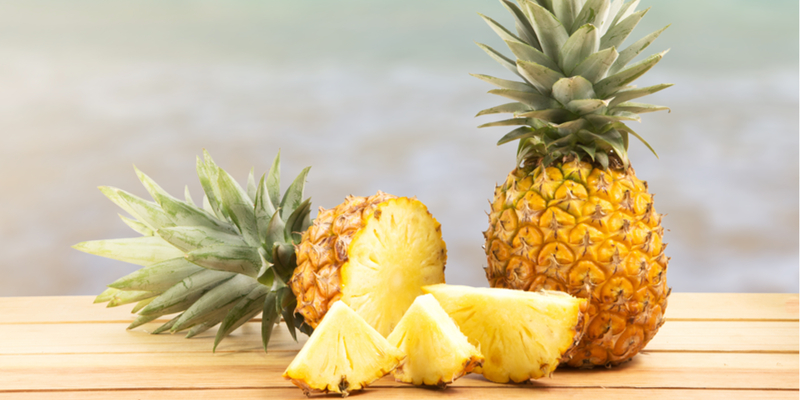The Health Benefits of Pineapples
Imagine coming across a pine-cone shaped juicy fruit, what would you call it? When explorers discovered the fruit, according to historical records in 1398, that’s just what they saw and thus, named it the pineapple. Ananas Comosus, the botanical name for pineapple, is more than just a deliciously sweet fruit, it’s also great for your health! In this post, we talk about some of the health benefits of pineapples.
But first things first, what exactly are we looking at here? Pineapples are a composite of many flowers whose individual fruitlets fuse together around a central core. Each fruitlet can be identified by an “eye”(the rough, spiny marking on the the pineapple’s surface). The area closest to the base of the fruit has the most sugar content and therefore tastes the sweetest.
Bromelain
A protein extract from the stem and core fruit of the pineapple, In the medical world, this fascinating compound has traditionally been used as a potent anti-inflammatory and anti-swelling agent. Drinking fresh pineapple juice has been shown to be a powerful remedy against inflammatory diseases.
Vitamin C
Pineapples have an even higher vitamin C than oranges! Vitamin C is a primary water-soluble antioxidant that fights cell damage, according to the Linus Pauling Institute at Oregon State University. This makes vitamin C a helpful fighter against problems such as heart disease and joint pain. Furthermore, vitamin C is vital for the proper function of the immune systems, meaning eating pineapples are a great way to prevent recurrent ear infections, colds and flu.
Vitamin A
They also contain a small amount of vitamin A and beta-carotene levels. These compounds are known to have antioxidant properties. Vitamin A is also required maintaining healthy mucusa, skin and is essential for vision.
Manganese and Thiamin (Vitamin B1)
Pineapples are an excellent source of the trace mineral manganese, which is an essential cofactor in energy production. In addition, the fruit also contains Thiamin (B1) which also acts a cofactor in enzymatic reactions central to energy production.
How to get the most out of pineapples in your diet
- Pineapples are generally available all year round with the best value being from November to February. Major growing regions within Australia include South East Queensland, particularly the Sunshine Coast hinterlands, Maryborough and Wide Bay area, the Yeppoon district, and all the way up to Mareeba and Mosman in Northern Queensland.
- Choose fruit that is free of spots, mould, bruises and darkened “eyes”, all of which may indicate that the pineapple is past its prime.
- It stops ripening as soon as it’s picked, so pick a fruit with a fragrant sweet smell at the stem end. Avoid those that smell musty, sour or fermented.
- Cut pineapples and if chilled, they will retain many of its nutrients for at least 6 days, according to the Journal of Agricultural and Food Chemistry.
Here are some ways to prepare:
- Cold Pressed Pineapple Juice
- Pineapple Smoothie
- Fruit Salad
- As a snack or dessert by itself
- Atop a tropical green salad
- As a chunky sauce or chutney served with chicken or shrimp
